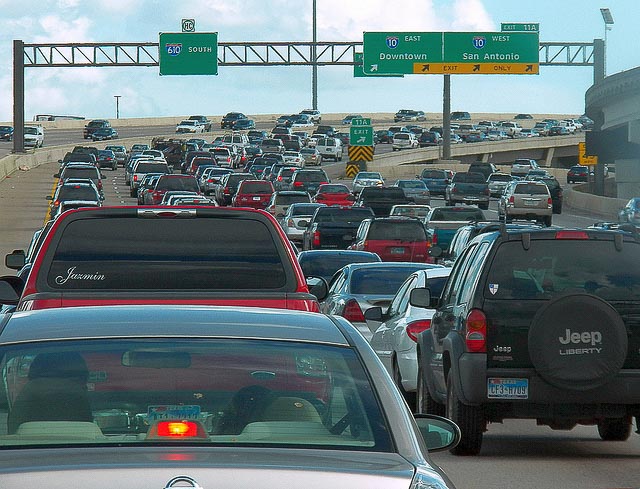On Wednesday, H-GAC, which oversees regional transportation planning, hosted their public meeting on the recently-released 2045 Regional Transportation Plan, which addresses possible transportation solutions for the Greater Houston area. During the meeting, several citizens vocalized their concerns, which included active transportation options, increased transportation connections and frequencies, and highway expansions.
H-GAC's long-range plan, which aims to closely match other plans like METRONext, includes sought-after and controversial projects like rebuilding the Interstate 45 in the downtown area, removing the Pierce Elevated, widening Grand Parkway and widening Interstate 10 to the east of Houston. An interactive map of the proposed projects can be found on H-GAC's website.
Since the Greater Houston area population may reach nearly 11 million by 2045, H-GAC officials recognize alternative modes to single-occupancy vehicles must be made available, like public transportation or active transportation such as walking or biking.
"If there's one underlying message, it is that we're going to expand by 4.2 million more people and 1.6 million more jobs with an increase of regional miles traveled," said Thomas Gray, H-GAC's transportation principal planner. "Expanding highways alone is not going to be able to handle that."
To prepare for the increase in population, H-GAC plans to include more high-capacity vehicles in express or bus-reserved lanes and add additional routes to serve into the high-capacity services. Additionally, Gray mentioned the importance of considering the future of autonomous vehicles.
Currently, 2.3 percent of Houstonians take public transportation to work, but H-GAC estimates more than 20 percent of citizens would take public transportation to work if their high-vision plan was implemented.
Though, as Gray noted, "People can't use transit if they can't get to it." The importance of connecting people to transit options through sidewalks and pedestrian infrastructure is increasingly important.
But, as many pedestrians in Houston know, the city's sidewalks aren't consistently great.
Clint McManus, a transportation senior planner for H-GAC, noted that Houston's current infrastructure consists of about 19,300 miles of sidewalks and 1,443 miles of bikeways. He estimates the city needs an estimated additional 44,000 miles of sidewalks and approximately 3,800 miles of proposed bike lanes.
"Not all of those are funded, so they're just visions for the life for what we'd like our community to have in future years," McManus said.
If the high-vision plan is implemented, the total cost would be about $132 billion in current dollars. It's planned to be paid for with federal highway and transit funds, state money given to the Texas Department of Transportation, other local agencies, and money collected in sales taxes.
The full report can be accessed here and you can leave your public comment. You have until May 10 to add your public comment.

